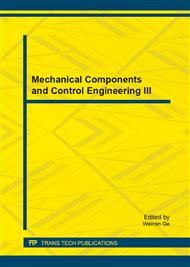p.1438
p.1442
p.1449
p.1453
p.1458
p.1462
p.1466
p.1470
p.1476
An Optimization Model for Dynamic Speed Control in Urban Freeway Networks
Abstract:
This paper introduced an optimization model to address dynamic speed control strategies for achieving network-wide speed harmonization. Genetic Algorithm (GA) was applied to search the optimal solution of the proposed model. During the search process, a computational fluid dynamics (CFD) based analytical model and microscopic traffic simulation VISSIM were applied to evaluate the performance of possible solutions. The proposed model can be used to determine the deployment of dynamic speed limits, the displayed speed limit, and the timing to change these speed limits. The proposed model was tested using VISSIM in an urban freeway network of about 12 miles long. Different simulation scenarios with varying AADT from 60,000 to 12,000 were tested. It was found that when properly implemented, dynamic speed control can improve traffic flow conditions, reduce congestion and emission, and enhance network throughput. For example, in the selected urban freeway network with the AADT of 80,000, the proposed dynamic speed control strategy can save 5% average travel time, reduce 9% of the vehicles with high collision risk and about 11% emission.
Info:
Periodical:
Pages:
1458-1461
Citation:
Online since:
October 2014
Authors:
Price:
Сopyright:
© 2014 Trans Tech Publications Ltd. All Rights Reserved
Share:
Citation:


